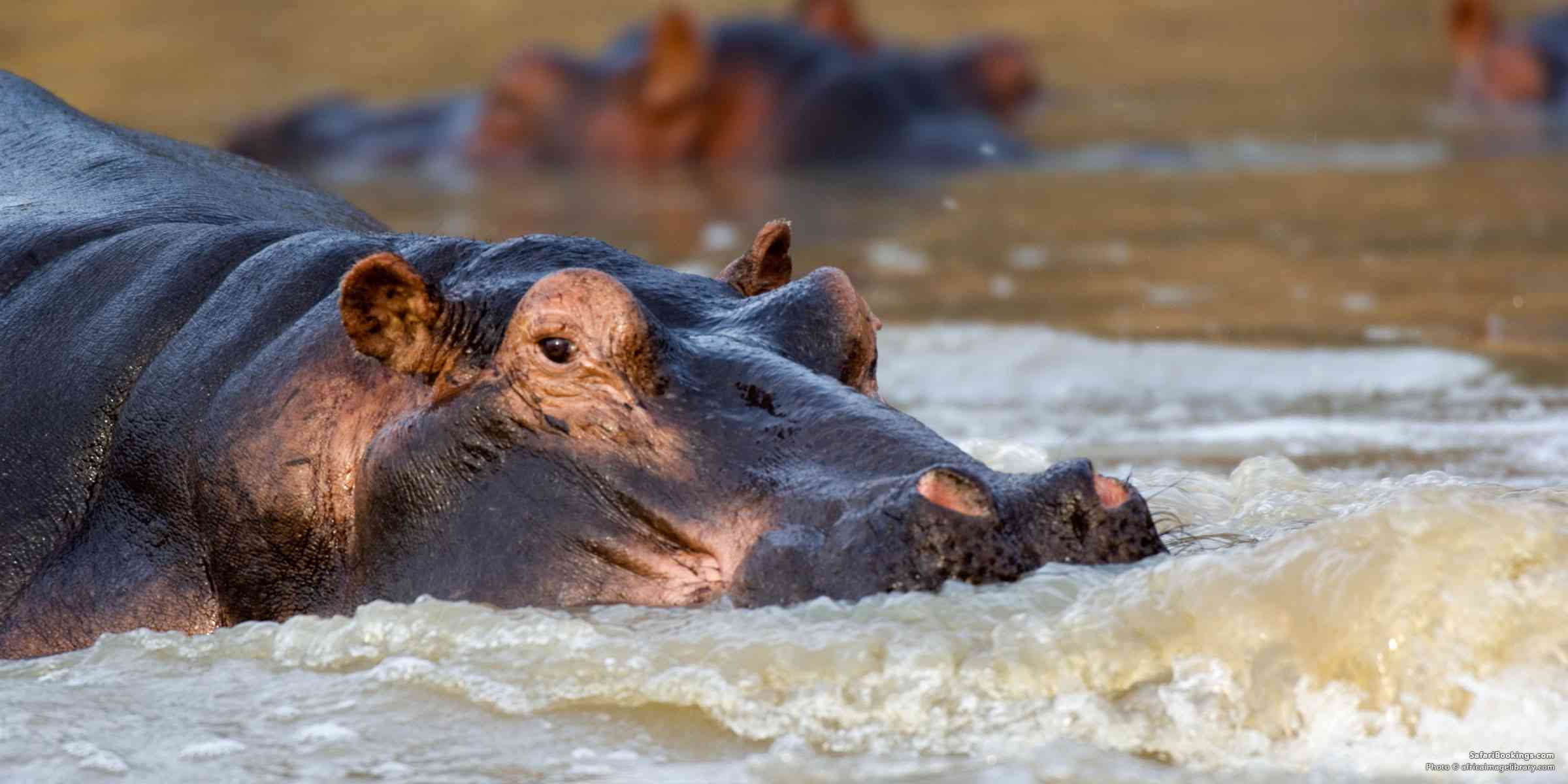
5 Fascinating Facts About the Hippo
 By Mike Unwin
By Mike Unwin
Mike is an award-winning wildlife writer, former editor of Travel Zambia magazine and author of the Bradt Guide to Southern African Wildlife.
It is something of a safari cliché that the hippo is ‘the most dangerous animal in Africa’. While there may be more than a little hyperbole in such a claim, it is nonetheless true that behind the friendly smile lies an aggressive disposition and mouthful of lethal teeth. After the elephant and white rhino, this heavyweight herbivore is the third largest of Africa’s mammals. Below are five fascinating facts about the hippo.
- Scientists once thought that the hippo's closest relatives were pigs. DNA evidence has since confirmed that the hippo shares a common semi-aquatic ancestor with whales and dolphins. They diverged from them some 55 million years ago.
- The hippo produces a natural sunscreen to help protect their hairless skin. This colorless secretion consists of two pigments that turn red-orange and then brown in sunlight. This gives the hippo its distinctive rosy hue. It is also strongly acidic, and serves as a form of disinfectant against the bacteria that enters its wounds.
- Despite spending their waking hours immersed in water, the hippo is not a good swimmer. Hippos prefer shallow areas, where they can rest on a sandbar, and when out of their depth move by springing in small bounds off the bottom.
- A rogue population of hippos in Puerto Triunfo, Colombia, descend from four individuals kept by drug baron Pablo Escobar. After Escobar was captured, the hippos escaped from the untended estate and roamed the surrounding farmland. There they attacked both people and cattle. Up to 40 are now thought to live in and around the Magdalena River.
- Hippos are unique among mammals in holding their heads half-submerged while calling. This means that the sound of their resonant bellow travels both under the water and above the surface. One can hear them broadcasting their territorial message far and wide. On land, at night, they are silent and non-territorial.
Want To Go on an African Safari?
Click on the button below to compare African safaris offered by top-rated tour operators.
 By Mike Unwin
By Mike Unwin
Mike is an award-winning wildlife writer, former editor of Travel Zambia magazine and author of the Bradt Guide to Southern African Wildlife.
More About This AuthorAfrican Safari Tours
-
![7-Day Private Luxury Serengeti Wildebeest Migration Tour]()
7-Day Private Luxury Serengeti Wildebeest Migration Tour
$3,520 pp (USD)
Tanzania: Private tourLuxuryLodge & Tented Camp
You Visit: Arusha (Start), Tarangire NP, Central Serengeti NP, Northern Serengeti NP, Serengeti NP, Ngorongoro Crater, Kilimanjaro Airport (End)

Meru Slopes Tours & Safaris
5.0/5 – 464 Reviews
-
![7-Day Luxury Botswana Safari Tour]()
7-Day Luxury Botswana Safari Tour
$6,599 to $8,799 pp (USD)
Botswana: Private tourLuxuryLodge & Tented Bush Camp
You Visit: Maun (Start), Central Kalahari GR, Okavango Delta, Chobe NP, Kasane (End)

Wayfairer Travel
4.8/5 – 185 Reviews
-
![4-Day Lake Nakuru - the Pink Lake]()
4-Day Lake Nakuru - the Pink Lake
$1,265 to $2,068 pp (USD)
Kenya: Private tourLuxuryLodge & Tented Camp
You Visit: Nairobi (Start), Masai Mara NR, Lake Nakuru NP, Nairobi (End)

Tekko Tours and Travel
4.9/5 – 139 Reviews



 Subscribe to our newsletter
Subscribe to our newsletter
 Follow us on Instagram
Follow us on Instagram

_1813_5e20b935b89f3.gif)



